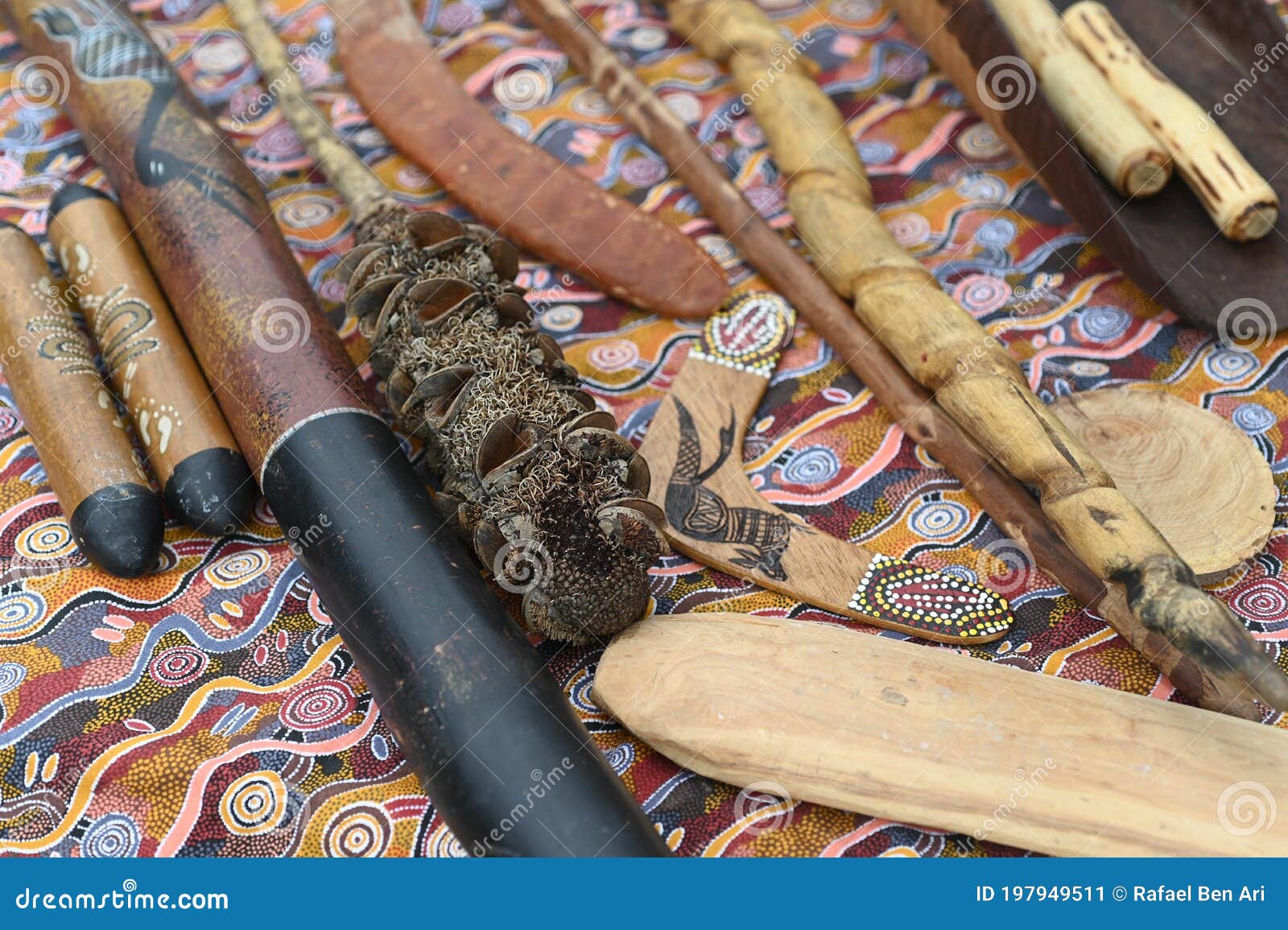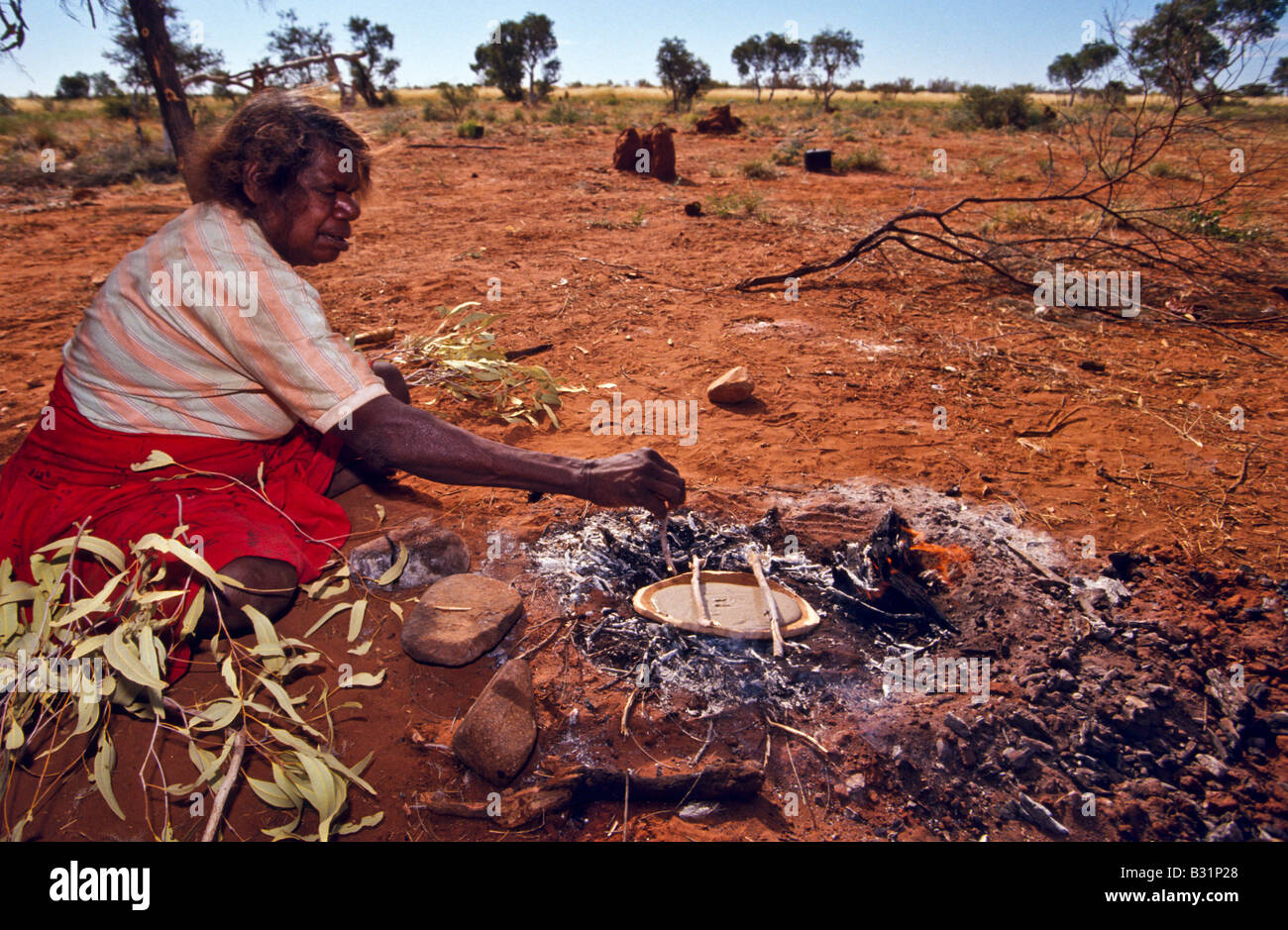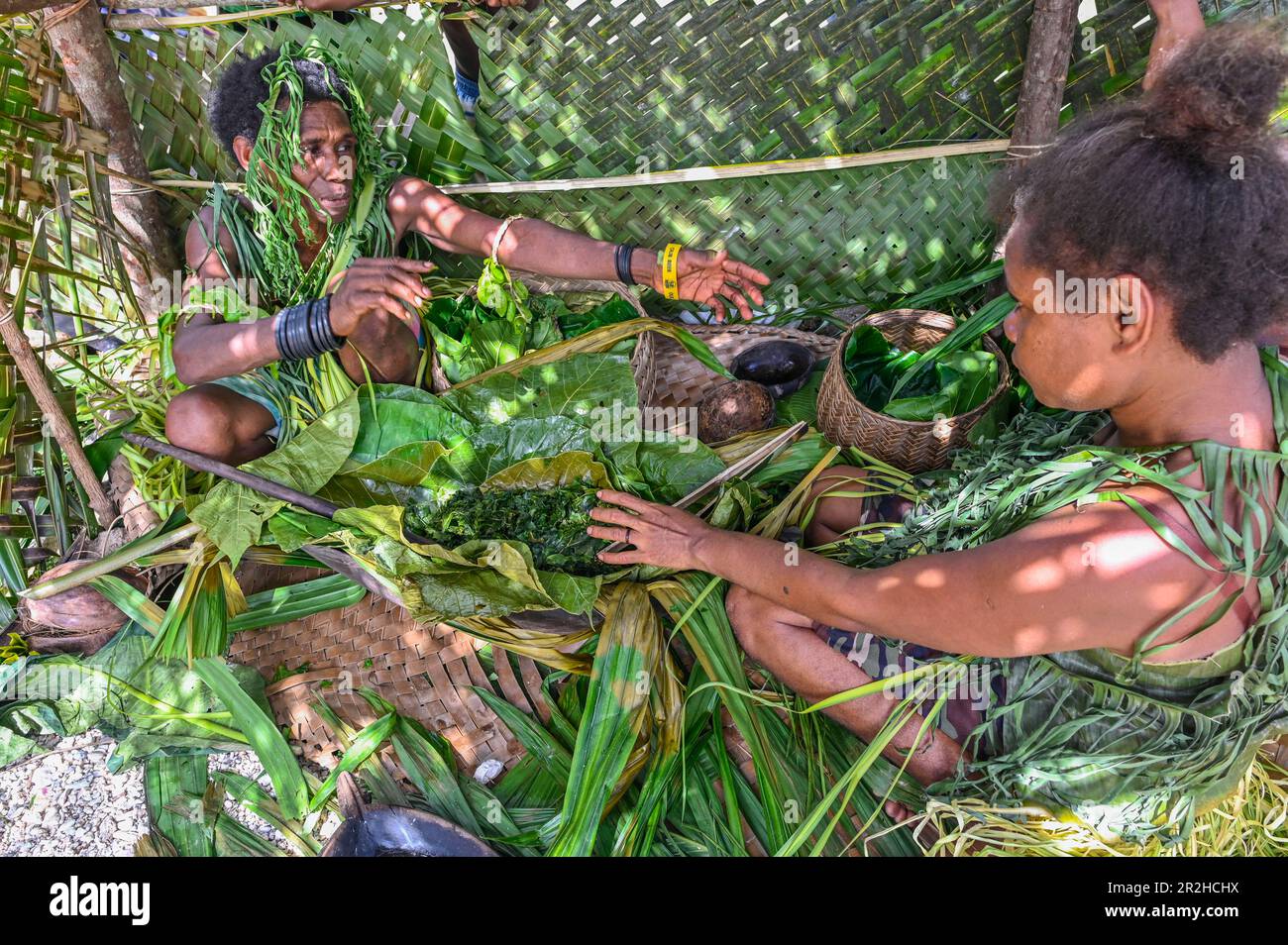
Echoes of the Earth: Traditional Aboriginal Cooking Tools and Their Enduring Legacy
For millennia, the Indigenous peoples of Australia, known as Aboriginal and Torres Strait Islander peoples, have lived in profound harmony with their environment. This deep connection is reflected in every aspect of their lives, including their culinary practices. Long before the advent of modern kitchens and sophisticated appliances, Aboriginal Australians possessed an intimate understanding of the land’s bounty and developed ingenious, sustainable tools to transform raw ingredients into nourishing and culturally significant meals. These traditional cooking tools are not merely implements; they are vessels of knowledge, carrying stories, traditions, and a profound respect for nature.
The foundation of Aboriginal cooking lies in its simplicity and resourcefulness. The tools employed were born from necessity, crafted from materials readily available in the diverse landscapes – the vast deserts, the lush rainforests, the winding river systems, and the expansive coastlines. Each tool served a specific purpose, often multi-functional, and was designed with an acute awareness of ecological balance, ensuring minimal impact on the environment.
The Hearth: The Heart of the Campfire

At the core of traditional Aboriginal cooking was the campfire. This was more than just a source of heat; it was the social and spiritual center of the community. The method of building and maintaining fires was a learned skill passed down through generations.
- Fire Sticks (Friction Fire Starting): The ability to create fire through friction was paramount. This often involved a fire drill (a spindle rotated against a hearth board) or a fire plow (rubbing a stick along a groove in another piece of wood). These techniques, requiring immense patience and skill, allowed for the cooking of food, warmth, and the preservation of essential knowledge through storytelling around the flames.
- Stone Tools for Fire Management: While not directly used for cooking food, various stone tools were crucial for preparing firewood. Sharp stone axes and adzes were used to fell small branches, and stone choppers or scrapers helped to break down larger pieces into manageable sizes for burning.
Cooking Vessels: Embracing the Earth’s Gifts
Aboriginal peoples ingeniously utilized natural materials for their cooking vessels, adapting to the resources of their specific country.
- Earth Ovens (Kurnell): Perhaps the most iconic and widespread cooking method was the earth oven, known by various names across different language groups (e.g., Kurnell, Kama, Kopi). This method involved digging a pit in the ground, lining it with stones, and building a large fire within it. Once the stones were intensely hot, the embers were removed, and food – often wrapped in damp leaves or bark – was placed directly onto the hot stones. The pit was then covered with more leaves, soil, and sometimes animal skins to trap the heat and steam, allowing for slow, even cooking. This technique was perfect for tougher cuts of meat, root vegetables, and even whole animals, rendering them tender and delicious.
- Bark Containers: Bark, particularly from eucalyptus and stringybark trees, was a versatile material. Large pieces of bark could be shaped into rudimentary containers, sometimes by heating and bending, or by using natural folds. These could be used to boil water over a low fire (carefully placed to avoid burning through) or to steam food.
- Shells and Gourds: In coastal and riverine areas, large shells, such as giant clams or abalone, served as natural cooking pots. Similarly, dried gourds, with their hard shells, could be used for boiling or storing liquids and food.
- Clay Pots (Less Common but Present): While not as prevalent as other methods due to the abundance of alternative resources, some Aboriginal groups in specific regions developed rudimentary pottery. These clay pots, fired in open fires, were used for cooking and storage.

Utensils: Extending the Reach and Ensuring Safety
Aboriginal peoples developed a range of utensils to handle hot food, prepare ingredients, and serve meals.
- Wooden Spits and Tongs: Long, sturdy branches, often sharpened at one end, were used as spits to roast meat over the campfire. For manipulating hot food and coals, forked sticks or specially shaped pieces of wood acted as tongs.
- Digging Sticks (Womera/Spear Thrower and Tools): The womera or spear thrower, while primarily a hunting tool, had multifaceted uses. Its pointed end could be used for digging out roots, tubers, and grubs from the soil. Other specialized digging sticks, often fire-hardened for durability, were essential for unearthing nutritious underground foods like yams, fern roots, and various seeds.
- Grinding Stones (Grinders and Mortars): For processing seeds, nuts, and grains into flour or paste, grinding stones were indispensable. These typically consisted of a larger, flatter stone (the mortar) and a smaller, rounded stone (the pestle or grinder). The repetitive grinding motion, often accompanied by song, was a vital step in preparing staple foods.
- Stone Knives and Scrapers: Sharp flakes of stone, such as flint or chert, were expertly shaped into knives for skinning animals, butchering meat, and cutting plant materials. Stone scrapers were used for cleaning hides and preparing food.
- Beaters and Pounders: Wooden beaters or pounders were used to crush seeds, nuts, and other ingredients to a finer consistency, preparing them for cooking or storage.
Preservation and Storage: Wisdom for Lean Times
The ability to preserve food was crucial for survival, especially in environments with fluctuating food availability.
- Drying and Smoking: Meat and fish were often dried in the sun or smoked over a low fire to extend their shelf life. This process also added a distinct flavor.
- Seed Storage: Seeds were meticulously collected, dried, and stored in cool, dry places, often in woven baskets or hollowed-out logs.
The Enduring Legacy: More Than Just Tools
The traditional Aboriginal cooking tools are more than just historical artifacts. They represent a profound understanding of sustainability, resourcefulness, and a deep respect for the land. The knowledge of how to find, prepare, and cook food using these tools was intrinsically linked to cultural identity, spiritual beliefs, and the transmission of knowledge across generations.
While modern conveniences have become prevalent, the principles behind these traditional tools – simplicity, efficiency, and harmony with nature – continue to inspire. Many Aboriginal communities are actively reviving and celebrating these practices, not only for their culinary heritage but also as a means of cultural revitalization and connection to Country. The echoes of the earth, carried in the shape of a digging stick, the warmth of an earth oven, and the rhythm of a grinding stone, serve as a powerful reminder of a way of life deeply rooted in the land and its timeless wisdom.
Sample Recipes: Embracing Traditional Flavors
While precise "recipes" in the modern sense are rare due to the oral tradition and adaptability of Aboriginal cooking, the following examples illustrate the principles and ingredients used, offering a glimpse into the flavors of traditional Aboriginal cuisine. These are conceptual recipes, aiming to capture the essence of the methods.
1. "Kurnell" Baked Kangaroo or Wallaby (Earth Oven Method)
This recipe utilizes the traditional earth oven technique for slow-cooking tougher meats.
Ingredients:
- 1 kg Kangaroo or Wallaby meat (can substitute with lean beef or lamb for practice)
- A selection of native herbs and aromatics (e.g., lemon myrtle leaves, native thyme, rosemary – if unavailable, use common rosemary or thyme)
- Large, damp native leaves for wrapping (e.g., banana leaves, large cabbage leaves, or foil for a modern adaptation)
- Optional: 1-2 large native yams or sweet potatoes, scrubbed and halved (substitute with sweet potatoes or large potatoes)
Equipment:
- A deep pit dug in the ground (or a large, heat-resistant pot for a modern demonstration)
- Stones to line the pit (or a cast-iron pot for modern adaptation)
- Firewood
- Damp leaves or Hessian sacking for covering
- Tongs or a sturdy stick for handling hot stones
Method:
- Prepare the Earth Oven: Dig a pit approximately 60-80 cm deep and 40-50 cm wide. Line the pit with stones. Build a large, hot fire within the pit and allow it to burn for at least 1-2 hours until the stones are glowing red hot and the wood has turned to embers.
- Prepare the Meat: Cut the kangaroo meat into large chunks. Season generously with native herbs (or their substitutes). If using yams/sweet potatoes, season them as well.
- Wrap the Food: Place the seasoned meat and yams onto the damp leaves (or foil). Wrap them securely, ensuring no gaps for steam to escape.
- Cook in the Earth Oven: Carefully remove the hot embers from the pit using tongs or a stick. Place the wrapped food directly onto the hot stones.
- Cover and Seal: Cover the food with a layer of damp leaves or Hessian sacking, then cover the entire pit with soil, pressing it down to create a seal.
- Bake: Allow the food to cook for 3-5 hours, depending on the size of the meat pieces and the heat of the oven. The low, slow heat and steam will tenderize the meat beautifully.
- Serve: Carefully unearth the food. The meat should be incredibly tender and infused with the aroma of the herbs. Serve directly from the leaves.
2. Seed Cakes with Bush Honey
This recipe highlights the importance of seeds as a staple and the use of natural sweeteners.
Ingredients:
- 2 cups mixed native seeds (e.g., wattle seeds, quandongs, or a mix of finely ground almonds, sunflower seeds, and flaxseeds for a modern adaptation)
- 1/4 cup water (or enough to form a dough)
- 1 tablespoon bush honey or native bee honey (or any raw honey)
- Pinch of salt (optional)
Equipment:
- Grinding stones (or a mortar and pestle, or a coffee grinder)
- A flat, hot stone or griddle (or a non-stick frying pan)
Method:
- Grind the Seeds: If using whole native seeds, grind them into a coarse flour using grinding stones or a modern grinder. If using a modern seed mix, pulse them until a flour-like consistency is achieved.
- Form the Dough: In a bowl, combine the ground seeds with a pinch of salt (if using). Gradually add water, mixing until a firm dough forms. Be careful not to make it too wet.
- Shape the Cakes: Divide the dough into small portions and shape them into flat, round cakes, about 1-2 cm thick.
- Cook the Cakes: Heat a flat stone over a low fire or heat a non-stick frying pan over medium heat. Place the seed cakes onto the hot surface and cook for 5-7 minutes on each side, or until they are lightly browned and firm.
- Serve: Drizzle generously with bush honey. These cakes are nutritious and can be enjoyed on their own or as a side.
3. Smoked Fish with Native Greens
This recipe focuses on the preservation technique of smoking and the use of fresh, foraged greens.
Ingredients:
- 1 whole fish (e.g., perch, bream – or a firm white fish like snapper or barramundi)
- A few sprigs of native herbs (e.g., saltbush, native mint, or parsley and mint)
- A handful of native greens (e.g., spinach, Warrigal greens, or young spinach and silverbeet leaves)
- Wood chips for smoking (e.g., eucalyptus wood, or applewood/hickory for a modern adaptation)
Equipment:
- A smoking apparatus (this could be a purpose-built smoker, or a pot with a lid and a rack over wood chips – or a BBQ with a smoking box)
- Sharp stone knife or modern knife
Method:
- Prepare the Fish: Clean and gut the fish. Make a few shallow slashes on each side of the fish. Stuff the cavity with native herbs.
- Prepare the Greens: Wash the native greens thoroughly.
- Set up the Smoker: Place a layer of wood chips at the bottom of your smoking apparatus. Place the fish on a rack above the wood chips.
- Smoke the Fish: Smoke the fish over low heat for 20-40 minutes, or until cooked through and flaky. The smoking time will vary depending on the size of the fish and the smoking method.
- Steam the Greens: While the fish is smoking, quickly steam the native greens until just wilted.
- Serve: Serve the smoked fish hot, accompanied by the steamed native greens. The smoky flavor of the fish is complemented by the fresh, slightly bitter greens.
These recipes offer a glimpse into the ingenuity and resourcefulness of traditional Aboriginal cooking. They encourage an appreciation for the natural world and the timeless wisdom of its original custodians.


